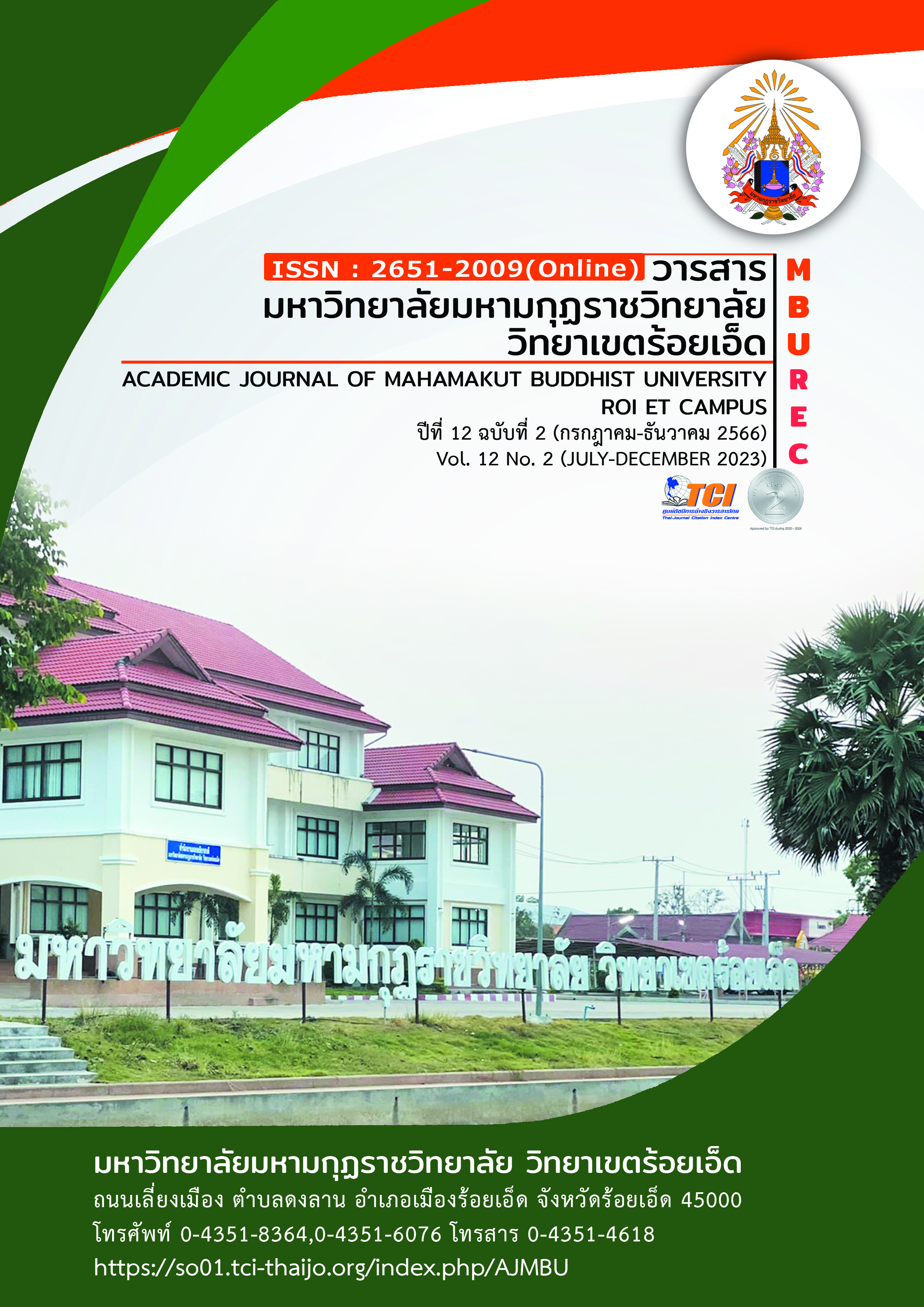THE HEALTHY ENCOURAGEMENT IN ACCORDANCE WITH THE BUDDHIST GUIDELINE OF THE BUDDHIST MONKS IN PHONPHISAI DISTRICT, NONGKHAI PROVINCE
Main Article Content
Abstract
The objectives of this research were 1) to study the concept and theory related to the healthy encouragement of the Buddhist monks 2) to study the healthy encouragement of the Buddhist monks in accordance with the Buddhist teaching and 3) to study the healthy encouragement of the Buddhist monks in compliance with Buddhist guideline of Buddhist monks in Phonpisai District, Nongkhai Province. The qualitative research. The sample group used in the research included a group of 20 monks, a group of 3 academics or experts, and a group of 7 general citizens who believed in Buddhism. The research instrument was an interview form. The data were analyzed using descriptive analysis.
The results found that: 1) The conception and theory related to the healthy encouragement of the Buddhist monks are the formats of the healthy treatment of the Buddhist monks as a whole by consuming the meals without powder, sugar including the food with the intensive taste and consuming the appropriate foods. It can be said that the consummative principle in the compliance with the Buddhist guideline is the consumption for the physical benefit. The good exercise of the Buddhist monks is to walk and clean up the courtyard of the temple in addition, to make the body and the mind have the rest and relaxation in accordance with the nature. To practice the Tranquility Meditation, Insight Meditation and to have the body checked should be always done including to ask for advice about the health to increase his own good health. 2) The encouragement of the Buddhist monks’ health in accordance with the principle of Buddhist teaching aims at understanding the world nature with principle of sufficient lifestyle. To pay attention to the body as appropriate without attachment should be done. To hold the morality as the foundation of lifestyle and keep one’s living with the mindfulness and carry on one’s own life in accordance with the principle of Dhamma and Vinaya by aiming at the cessation of suffering and liberation of all sufferings. 3) The healthy encouragement in accordance with the Buddhist alignment of the Buddhist monks in Phonpisai District, Nongkhai Province is found that the Four Cultivations are applied for practice in order to take care of the physical and mental cultivation of one who gets interested in the Dhamma health. The curriculum of the Four Cultivations is opened., that is, the physical healthy creation (Physical Cultivation), the moral healthy creation (Moral Cultivation), the mental health encouragement (Mental Cultivation), the intelligent healthy encouragement (Intellectual Cultivation) all of these should be brought for teaching people who enter the temples for making various merits in various festivals of Phonpisai District, Nongkhai Province in order to set the foundation of the background, importance, value and benefits of the Dhamma Principles in Buddhism for the sake of one’s own refuge absolutely and for the sake of good physical and mental health.
Article Details

This work is licensed under a Creative Commons Attribution-NonCommercial-NoDerivatives 4.0 International License.
References
กรมอนามัย กระทรวงสาธารณสุข. (2552). มาตรฐานโรงพยาบาลส่งเสริมสุขภาพฉบับบูรณาการระหว่างกรมอนามัยและกรมควบคุมโรค. กรุงเทพมหานคร : กระทรวงสาธารณสุข.
นางสาวเรวดี ศิริภาพ. (2562). รูปแบบการพัฒนาสุขภาวะเชิงพุทธบูรณาการของพนักงานบริษัท. ดุษฎีนิพนธ์ปริญญาพุทธศาสตรดุษฎีบัณฑิต สาขาวิชาพุทธศาสนา. บัณฑิตวิทยาลัย :มหาวิทยาลัยมหาจุฬาลงกรณราชวิทยาลัย.
พินิจ ลาภธนานนท์. (2556). โครงการวิจัยเชิงปฏิบัติการแบบมีส่วนร่วม การเสริมสร้างเครือข่ายพระสงฆ์นักพัฒนาในภาคอีสานเพื่อมีส่วนร่วมในการพัฒนากิจกรรมสร้างเป็นธรรมทางสังคม. กรุงเทพมหานคร : สถาบันวิจัยทางสังคมจุฬาลงกรณ์มหาวิทยาลัย.
พระปลัดทัศนพล เขมจาโร (พรหมมา). (2564). รูปแบบการบริหารจัดการสุขภาพพระสงฆ์ตามธรรมนูญสุขภาพพระสงฆ์แห่งชาติของพระสังฆาธิการในจังหวัดพิจิตร. สารนิพนธ์ปริญญาพุทธศาสตรดุษฎีบัณฑิต สาขาวิชาการจัดการเชิงพุทธ. บัณฑิตวิทยาลัย :มหาวิทยาลัยมหาจุฬาลงกรณราชวิทยาลัย.
มหาจุฬาลงกรณราชวิทยาลัย. (2539). พระไตรปิฎกภาษาไทยฉบับมหาจุฬาลงกรณราชวิทยาลัย. กรุงเทพมหานคร : โรงพิมพ์มหาจุฬาลงกรณราชวิทยาลัย.
วีกิพีเดีย. (2565). รายชื่อวัดในจังหวัดหนองคาย. สืบค้นเมื่อ 5 ตุลาคม 2565. จาก https://th.wikipedia.org/wiki/รายชื่อวัดในจังหวัดหนองคาย.
สุวิมล พลวรรณ. (2552). ปัจจัยที่มีความสัมพันธ์กับคุณภาพชีวิตของพระสงฆ์ที่อาพาธด้วยโรคเรื้อรัง จังหวัดสระบุรี. นครปฐม : มหาวิทยาลัยมหิดล.
World Bank. (2017). World Bank Country and Lending Groups. Retrieved 21 July 2021. From https://datahelpdesk.worldbank.org/knowledgebase/articles/906519-world- bank-country-and-lending-groups


